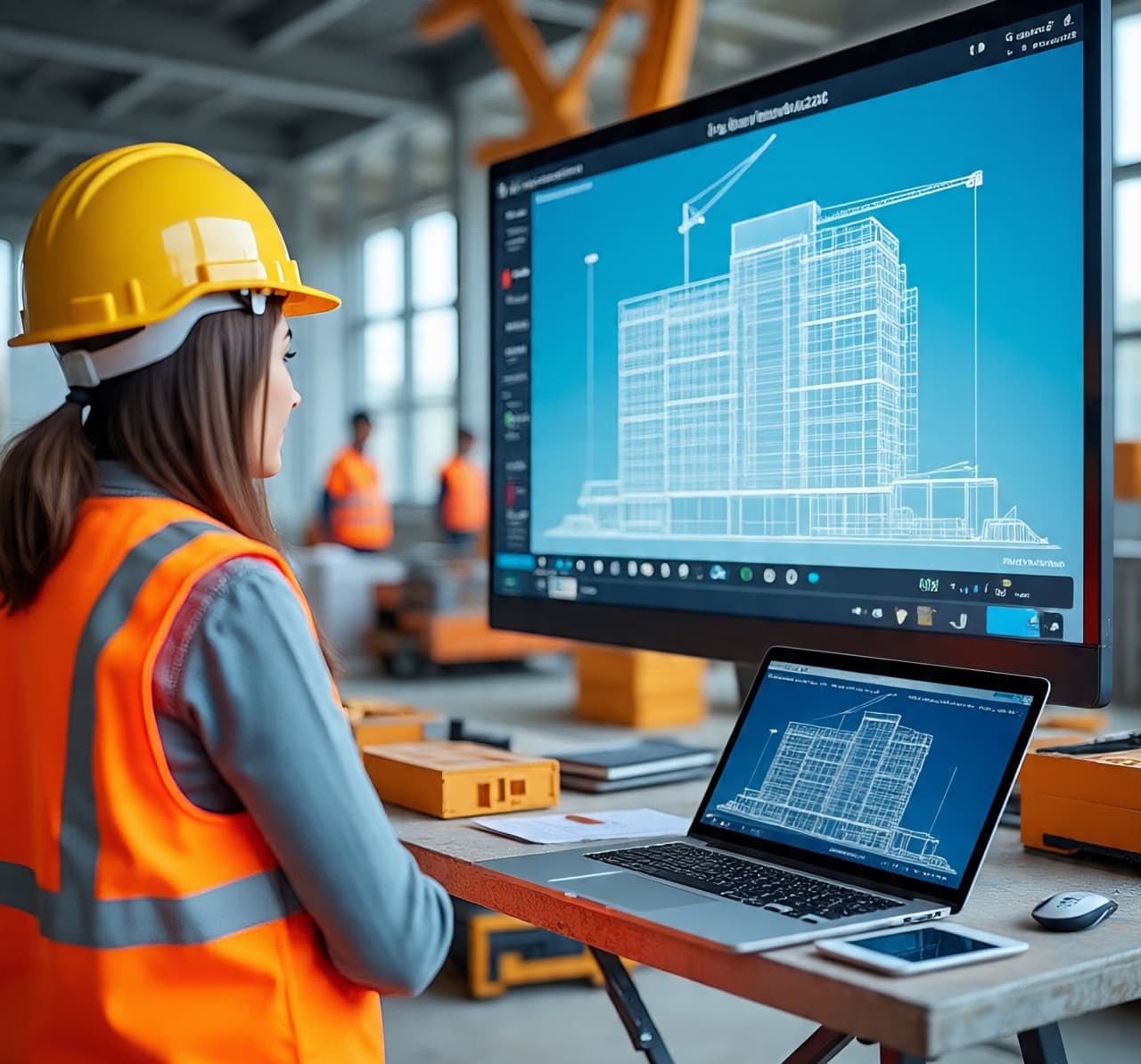The construction industry has historically been slow to adopt new technologies, but the landscape of construction estimating is rapidly evolving. Today’s contractors who embrace artificial intelligence, automation, and cloud-based tools are gaining significant competitive advantages in accuracy, speed, and profitability. This technological revolution is transforming how estimates are prepared, analyzed, and delivered to clients.
The Digital Transformation of Construction Estimating
Traditional construction estimating relied heavily on manual calculations, paper-based takeoffs, and years of experience to develop accurate project costs. While experience remains invaluable, modern technology amplifies human expertise and eliminates many sources of error that plague manual processes.
Digital estimating tools now integrate seamlessly with Building Information Modeling (BIM) systems, allowing estimators to extract quantities directly from 3D models. This integration reduces the time spent on manual measurements while improving accuracy and consistency across projects.
Artificial Intelligence: The Game Changer
AI is revolutionizing construction estimating by learning from historical project data to predict costs more accurately than ever before. Machine learning algorithms analyze thousands of completed projects to identify patterns and correlations that human estimators might miss.
AI-powered estimating software can automatically adjust costs based on project location, market conditions, and seasonal variations. These systems continuously learn from new data, becoming more accurate over time. Some advanced AI tools can even predict potential cost overruns before they occur, allowing contractors to take preventive measures.
Predictive analytics help identify which types of projects are most profitable and which cost categories typically experience the greatest variance. This insight enables contractors to make more informed decisions about which projects to pursue and how to price them competitively.
Automation: Streamlining Repetitive Tasks
Automation eliminates the tedious, time-consuming aspects of estimating that previously required hours of manual work. Automated takeoff tools can measure quantities from digital plans in minutes rather than hours, freeing estimators to focus on analysis and strategy.
Modern estimating software automatically applies current material prices, labor rates, and equipment costs, updating estimates in real-time as market conditions change. This ensures that every estimate reflects the most current pricing information available.
Assembly-based estimating allows contractors to build libraries of common construction sequences with predetermined labor, material, and equipment requirements. Once created, these assemblies can be reused across multiple projects, ensuring consistency and reducing estimating time.
Cloud-Based Collaboration
Cloud technology has transformed estimating from a solitary activity into a collaborative process. Multiple team members can work on the same estimate simultaneously, with changes synchronized in real-time across all users.
Project stakeholders can access estimates from anywhere with an internet connection, enabling faster decision-making and approval processes. This accessibility is particularly valuable for companies with multiple locations or remote team members.
Cloud-based estimating platforms also provide robust data backup and security features, protecting valuable estimating data from loss while ensuring it remains accessible when needed. Version control features track changes and allow teams to revert to previous versions if necessary.
Integration with Project Management
Modern estimating tools integrate seamlessly with project management software, creating a continuous flow of information from initial estimate through project completion. This integration allows for real-time comparison of estimated versus actual costs, providing valuable feedback for future estimates.
When estimates are connected to project management systems, changes in project scope or specifications automatically trigger estimate updates. This ensures that all stakeholders are working with the most current cost information throughout the project lifecycle.
Mobile Technology in the Field
Mobile estimating applications enable contractors to prepare estimates on-site, incorporating real-time field conditions into their calculations. This capability is particularly valuable for service work, renovations, and emergency repairs where immediate estimates are required.
Field estimators can photograph site conditions, take measurements, and input data directly into cloud-based estimating systems. This real-time data entry reduces transcription errors and speeds up the estimating process.
Data Analytics and Reporting
Advanced estimating platforms provide sophisticated reporting and analytics capabilities that help contractors understand their estimating performance and identify areas for improvement. These systems can track estimating accuracy, win rates, and profitability by project type, client, or estimator.
Historical data analysis reveals trends in cost escalation, productivity rates, and market conditions. This information helps contractors make more informed decisions about future projects and pricing strategies.
Overcoming Implementation Challenges
While the benefits of technology adoption are clear, many contractors face challenges in implementing new estimating systems. Common obstacles include employee resistance to change, concerns about software costs, and questions about return on investment.
Successful technology adoption requires a structured approach that includes thorough training, gradual implementation, and clear communication about the benefits to all stakeholders. Starting with pilot projects allows teams to become familiar with new tools before full-scale deployment.
The Competitive Advantage
Contractors who embrace estimating technology gain several competitive advantages over those relying on traditional methods. They can prepare estimates faster, with greater accuracy, and at lower cost than competitors using manual processes.
Technology-enabled contractors can take on more complex projects and handle larger volumes of estimating work without proportional increases in staff. This scalability provides opportunities for business growth and increased profitability.
Future Trends
The future of construction estimating will see even greater integration of artificial intelligence, with systems capable of learning from project outcomes to continuously improve estimating accuracy. Virtual and augmented reality technologies will enable more immersive project visualization and more accurate quantity takeoffs.
Blockchain technology may revolutionize how estimating data is stored and shared, providing tamper-proof records of estimates and changes. Internet of Things (IoT) sensors on construction sites will provide real-time data to update estimates based on actual field conditions.
Making the Transition
For contractors ready to embrace estimating technology, the key is to start with clear objectives and a realistic implementation timeline. Begin by evaluating current estimating processes to identify areas where technology can provide the greatest benefit.
Choose software solutions that integrate well with existing systems and provide adequate training and support. Remember that technology is a tool to enhance human expertise, not replace it. The most successful implementations combine advanced technology with experienced estimators who understand construction processes and market conditions.
Conclusion
The construction industry’s digital transformation is accelerating, and estimating technology is at the forefront of this change. Contractors who embrace AI, automation, and cloud-based tools position themselves for success in an increasingly competitive market.
The question is not whether to adopt estimating technology, but how quickly and effectively it can be implemented. Those who act now will enjoy the benefits of improved accuracy, increased efficiency, and enhanced competitiveness, while those who delay risk falling behind in an industry that increasingly rewards technological sophistication.
The future belongs to contractors who understand that technology amplifies their expertise and enables them to deliver better estimates, faster turnarounds, and more profitable projects. The time to embrace this technological revolution is now.


